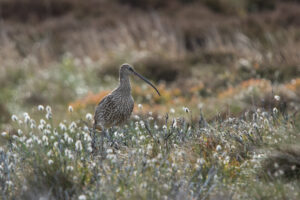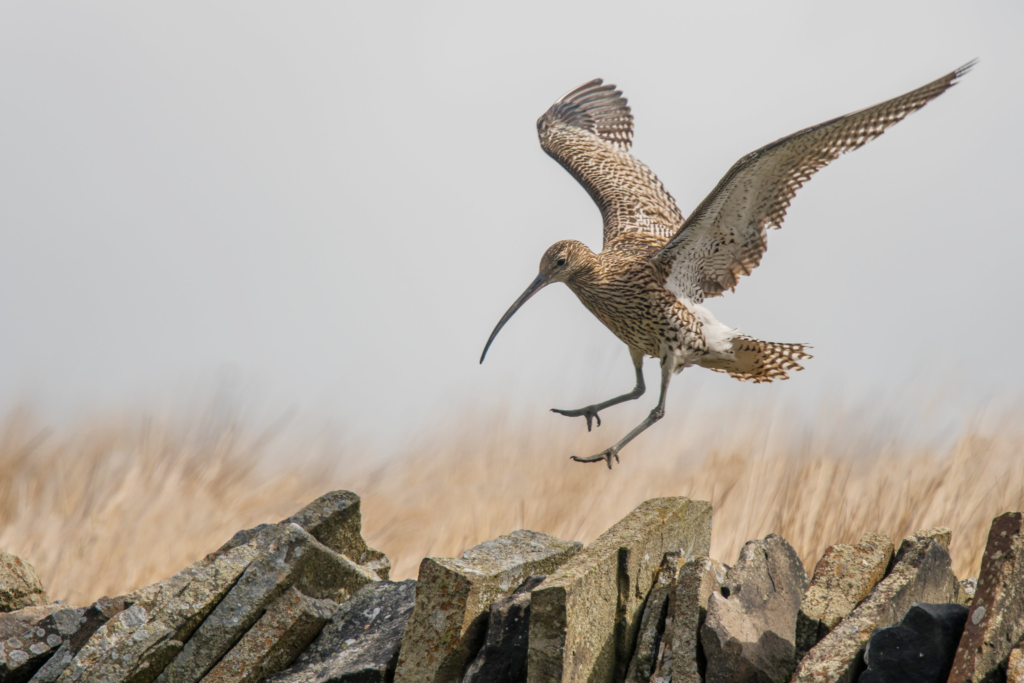As spring blooms in a riot of bluebells, bright green buds and even brighter skies, it’s hard to miss the accompanying upswell of birdsong. But where the thrushes, Chiffchaffs and Robins get most of the attention, there is one very special bird that heralds the new season with a tune like no other.
The Curlew is a wunderkind worthy of a place in the Music Hall of Fame. Its call has the power to overwhelm us with both joy and sadness and evoke a landscape with a single whistle. It can anchor us so deeply in a place and time that just a recording of a Curlew call, or some cheeky Song Thrush-mimicry will instantly transport you back to a windswept winter beach or sultry summer evening on the moors.
But what’s in a song so iconic? The magic of the Curlew call lies in its range – its mastery of both major and minor notes, and a repertoire that changes with the seasons.
The soundtrack to spring is a triumphant bubbling call as the birds return from their coastal wintering grounds, skudding overhead like clouds borne on storm-winds. This exaltation rises swiftly through the harmonic scale, and it’s thought that a female Curlew will choose a male based on the quality of the highest harmonic in his call.
As the days darken and we pine for the sultry days of summer, the Curlews seem to mourn with us, calling sorrowfully as they fly back to their winter refuges. This haunting ‘cur-lee, cur-lee’ is one of the most evocative sounds in the natural world, reaching deep into the heart as if, described the naturalist, W.H. Hudson, “uttered by some filmy being, half spirit and half bird.”
So eerie is this cry that the Curlew has often found itself associated with death. The Seven Whistlers (a group of mysterious birds linked to witches and demons, whose unearthly, after-dark calls were said to presage disaster) were thought to be Curlew. In Wales, the Curlew’s call is associated with Cwn Annwyn: mythical black dogs that harry the souls of the dead across the sky.

The call of the Curlew enriches our lives in so many ways. Without it, our moors, coasts, bogs and grasslands would be emptier – our culture and folklore duller. Their iconic lyricism has inspired poets for centuries, from the days when their ecstatic cries filled the sand and hills from morning into night, until now, when we genuinely risk losing them. It is getting harder and harder to hear a Curlew as predators, modern farming, irresponsible tree planting and climate change chip away at their numbers. Fewer and fewer nests are successful, leaving these long-lived birds without a legacy that will introduce their call to future generations.
Whether you are an artist, a writer, a hiker, a naturalist, a farmer, a bus driver – imagine a world without this call. How big will the hole in your heart be? How much emptier will your walk feel when the soul of the landscape is stolen?
Photos by Tim Melling.

